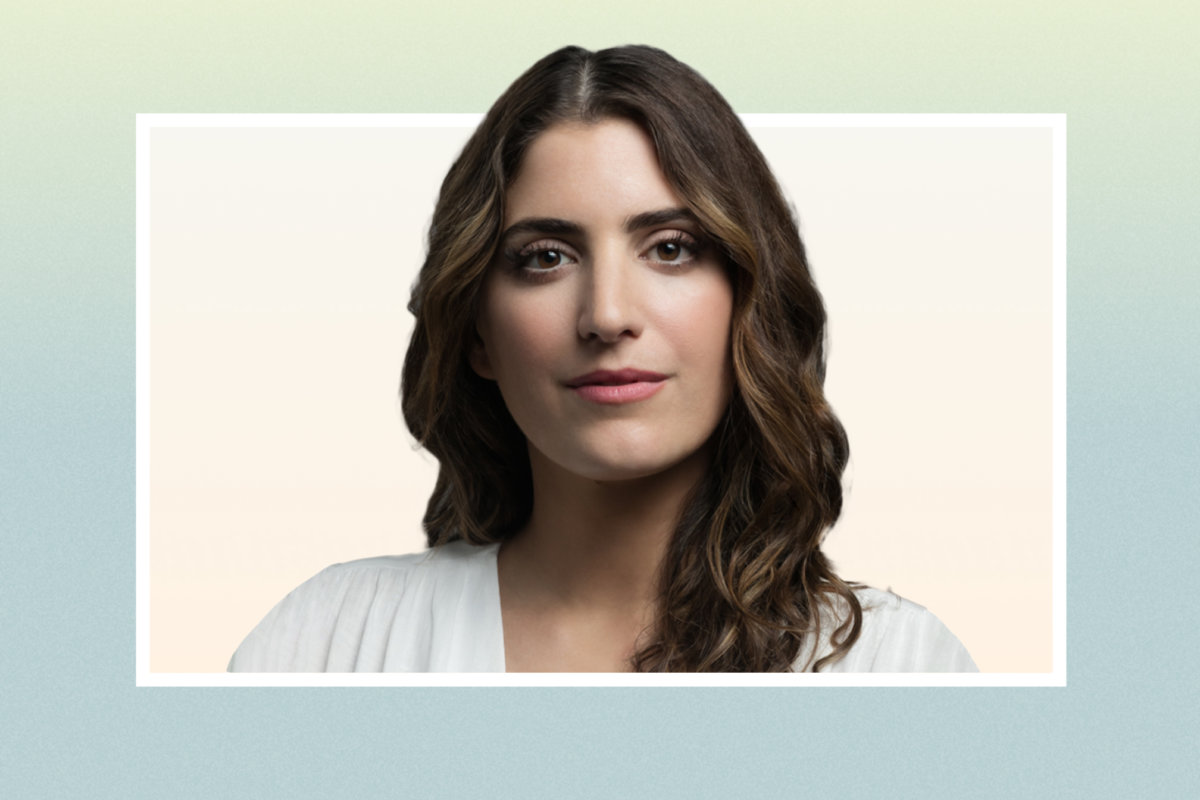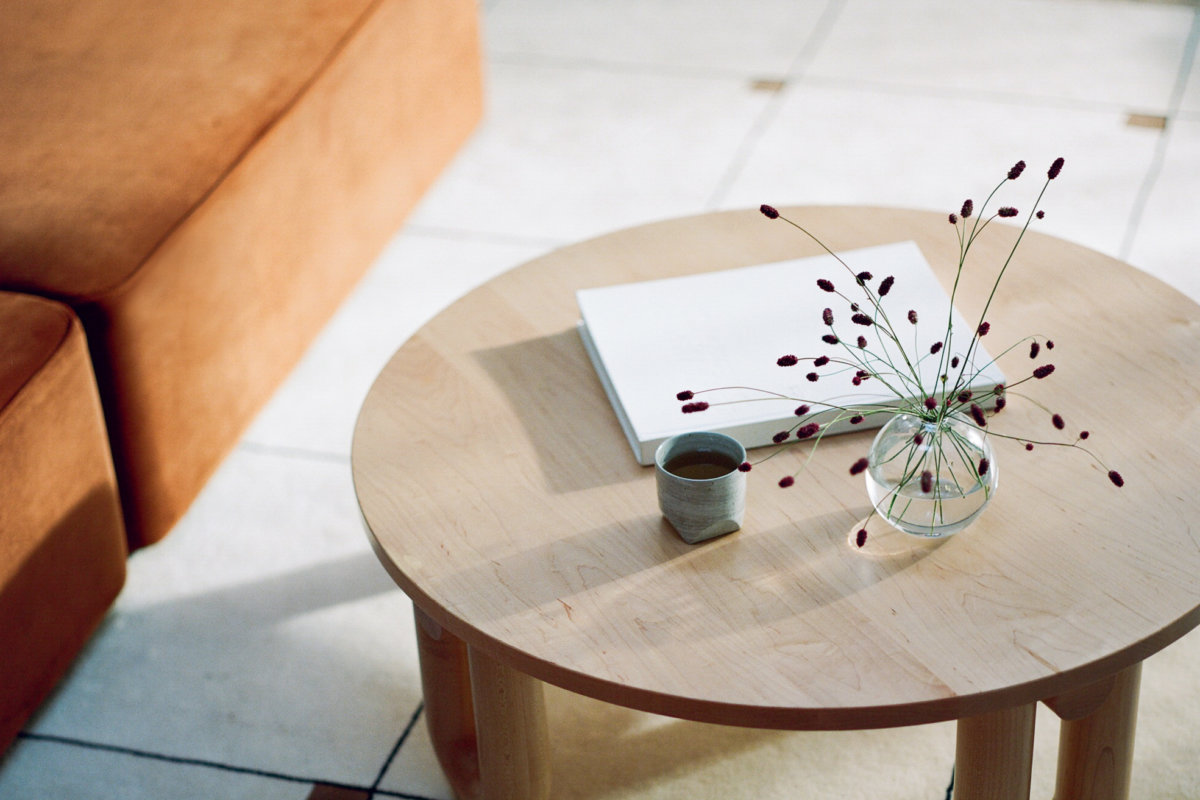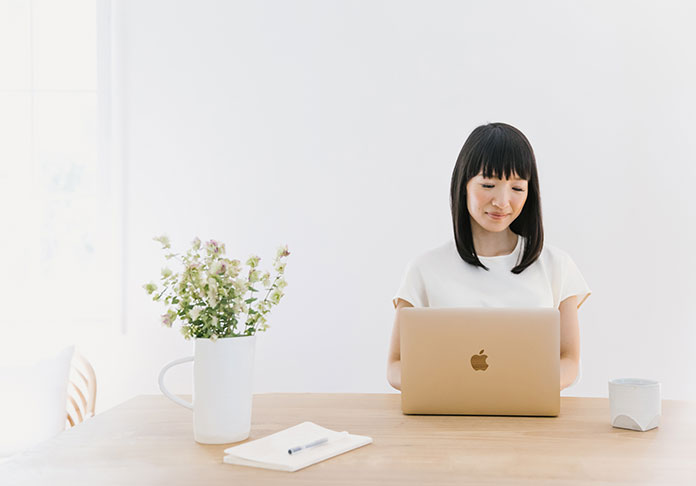For so much of this life, we are asked to define ourselves within narrow categories — tidy or messy, man or woman, healthy or sick, rich or poor. But, as much as we’re drawn to the black and white, those binaries flout reality. We live our lives in greyscale, each one of us an amalgamation of joy, loss, passions and priorities that defy categorization. Just ask Suleika Jaouad, whose writing often renders that tension.
“We are not well or unwell, not whole or broken. We all exist somewhere in the messy middle,” Jaouad wrote in the Guardian in 2021, “[…]The key is to embrace the in-between, to make of the wilderness a home.”
After being diagnosed with leukemia at the age of 22, Jaouad began chronicling her experiences, first through a journaling project with family, then in an Emmy Award-winning New York Times column, “Life, Interrupted,” and eventually, as her 2021 bestselling memoir, “Between Two Kingdoms: A Memoir of Life Interrupted.”
Jaouad’s self-exploration and insights — on living in the unknown, creative fulfillment, love and self-acceptance also — led her to create The Isolation Journals, a newsletter of weekly journaling prompts. As the world shut down in 2020, Jaouad launched the newsletter to create a community out of chaos. Within 100 days, more than 100,000 participants joined her. Today, across the world, professional writers, “non-writers,” mothers, daughters, brothers and lovers fill pages with thoughts mundane and profound.
In December 2021, when Jaouad announced that her leukemia had returned, she spent little time discussing her new prognosis. She wrote with kindness but spared no punches — about learning to “live on the fault lines,” self-advocacy and the transformative power of caring for others. We spoke with Jaouad about how the mess of life can spark joy and connection, if we let it.
“Creativity is for everyone — it’s an innate human trait to build things and to express ourselves through the things we make.”
Let’s start simple. What’s sparking joy for you right now?
Doing things I’ve never done before. Over the last year, I’ve tried my hand at everything from painting watercolors to flower arranging, and I’m always looking for new forms of creative expression to twist my practice out of its usual ruts. Most recently it was a creative conversation with my husband, Jon Batiste. We sat down on the floor of his studio with a couple of microphones and some powerful community-sourced questions about life and creativity. We’d never really worked together in a professional capacity, and it was really fun to make something together, to learn how to edit audio and then to send it off into the world.
You started The Isolation Journals at the height of the pandemic with “the idea that life’s interruptions are invitations to deepen our creative practice.” What does the project look like now?
I started The Isolation Journals when I saw how people were struggling with so much uncertainty and upheaval. I’d lived in medical isolation during my first bout with leukemia in my 20s — I couldn’t go out, had to wear a mask, all those things — and during that time, I did a 100-day creativity project with my family that kept us grounded and connected. So I decided to invite people to commit to a daily act of creativity. I began sending out daily emails with a personal reflection from me and an essay and prompt from a different extraordinary contributor.
By the end of the first 100 days, more than 100,000 people had subscribed from all over the world, and it has continued to grow. It’s partly because the pandemic is ongoing, but I think it also speaks to isolation as a feature of modern life. So many people have written in to say that they were desperate for connection even before the pandemic. It’s such an irony that we have all these ways that we can get in touch but somehow feel more alone than ever.
I call The Isolation Journals a newsletter because that’s how it’s delivered, but it’s so much more than that. It’s a creative community. It’s call and response. It’s where we walk through our most difficult passages together.
“The journal is capacious. It can be whatever you need it to be, can hold your joy and your rage and your random musings. You can show up as your most unvarnished, unedited self, writing without any end goal.”
Creative practice may feel intimidating to some people who don’t consider themselves “creative.” How does someone make time and space to start a creative practice when it feels unfamiliar?
A founding tenet of The Isolation Journals is that creativity is for everyone—that it’s an innate human trait to build things and to express ourselves through the things we make. This is true whether it’s something functional, like shelter, or something more artistic, like a story or a song or a painting.
But it’s also true that many of us have suffered some sort of creative injury along the way, sometimes very early in childhood. In an elementary school art class, the teacher may have made a thoughtless remark, or you compared yourself with someone else, and you started to think you weren’t good enough. And then as we get older, we tend to accept this strange idea that if we don’t do something professionally—if we’re not pursuing painting or writing or music seriously—that it’s not for us. I just don’t accept that. Humans are deeply creative beings.
Why are you drawn to journaling specifically?
I love journaling because it doesn’t require any training or expertise, and the barrier to entry is so low. You just need a notebook and a pen. Also, it can take any shape—stories, lists, poems or some kind of hybrid between writing and doodling. If you’re feeling uninspired, prompts can be useful too — The Isolation Journals has an archive of over 200 free creative prompts to get you started.
There’s so much research that shows the benefits of journaling, from reducing symptoms of depression and anxiety to enhancing your sense of well-being. As a lifelong journaler, I’ve seen those benefits firsthand. Journaling has helped me navigate difficult transitional passages and cut through the noise.
The journal is capacious. It can be whatever you need it to be, can hold your joy and your rage and your random musings. You can show up as your most unvarnished, unedited self, writing without any end goal. And if you do it daily, or at least regularly, the practice begins to reveal things. It becomes a mirror.
“[As] we get older, we tend to accept this strange idea that if we don’t do something professionally—if we’re not pursuing painting or writing or music seriously—that it’s not for us. I just don’t accept that. Humans are deeply creative beings.”
What motivates you to continue the creative work? And how do you strike a balance between work and rest, especially now, amid both an ongoing pandemic and treatment for leukemia?
In the past, I wrapped up a lot of my self-worth in my productivity, which made it a struggle to balance rest and work. When I was diagnosed at 22, I wrote my column from my hospital room. While it was an amazing opportunity, I often pushed my body to the point of making myself sicker. I realized I had to build a career accommodating my limitations and lingering health challenges. So I chose the freelance route, which gave me as much flexibility as I needed.
Now that I’m in treatment again, how and when I work is not up to me. My body demands a whole new level of rest, and it’s shifted my perspective. I may only have three hours a day where I have the energy to do things, and that’s incredibly clarifying. Suddenly I can see what’s essential. I am learning to say no to things that aren’t an immediate, gut-level hell yes.
I just celebrated the one-year anniversary of my second bone marrow transplant — a rough year to say the least — but I can feel myself getting stronger each day, especially recently. Because I’ve been feeling better, I’ve had more than three hours of energy in a day. But I’m still trying to hold onto that framing: What would I do today if I only had three hours? I think it’s a useful thought exercise for anyone. Actually, for everyone.
I will have to do chemotherapy for the rest of my life, and the ongoingness, I’m trying to make sense of that. My creative work is where that happens. It’s how I puzzle through. It doesn’t paper over the heartache, but instead offers a different way to engage with it. I can marry the joys and sorrows of life and let them live alongside each other. The creative process is a kind of alchemy.
In a recent newsletter, you wrote about self-forgiveness and when doing your best falls short. You said, “I have a very fraught relationship with what my best is. I also think it can be used as a shield—as in, ‘I’ve done my best, so leave me alone.’” What are your current thoughts on doing your best and striking that balance?
Recently I’ve been thinking about the conflation of doing your best with doing the best. I think it’s a product of how hyper-productive and hyper-competitive American culture is — but whatever the case, I’ve been trying to disentangle the two. And I think that doing my best is trying my hardest, but not at the cost of my own well-being or the well-being of others around me.
That’s not easy for me. I have a type-A personality and a turbo-charged, hyper-productive mentality, so I rarely feel like I’m doing enough. Something I’ve been trying out lately is keeping an accomplishment log of everything I did that day. Not only the work tasks but also the tendernesses — those good things I’ve done for myself and the people I care about. I count the work call and the nap equally. When I make that list, not only do I feel that I’ve done enough, I feel proud of my body and proud of myself.
“As much as I love my things, what I love even more is giving them away. I love the idea of adding my own ‘contagion magic’ and passing beautiful objects along for others to enjoy.”
You once said, “Striving for some perfect state of wellness is futile. The key is to embrace the in-between, to make of the wilderness a home.” Marie’s recent admission that she has a messier life with children rocked the internet, but she made a similar point — that the definition of balance and wellness is a shifting target. How do you currently define wellness or well-being or both? What rituals currently bring you into balance?
I have to say, I still think that’s my definition of well-being — doing away with binary notions of sick or healthy, instead embracing the in-between. When I first said those words, I was speaking from the perspective of being “cured,” but I’m now living that messy middle in a more acute way. On paper, I currently don’t have leukemia, but given my high likelihood of relapse, I’ll be in treatment for the rest of my life. So those words ring even truer now, in ways I never imagined.
When I’m in that wilderness of survival, the aesthetics of my space, be it a hospital room or my home, are really important to me.
As one small example, I had to spend five weeks in isolation in the hospital when I had my bone marrow transplant a year ago. I know how bleak it can be to live under fluorescent lighting, so I placed LED candles on the bedside table and the windowsill. It transformed the space. Rather than sterile and institutional, it was warm and gentle and alive (though it was slightly alarming to the nurses — they said that every time they passed by, it looked like the room was on fire). Also, for the first time since childhood, I painted — these dreamscapes — and when I put them up on the walls, they seemed to breathe life into the place.
When I experience beauty — whether it’s the dancing light of a candle or the cobalt blue of a painting — it reminds me to keep seeking out and cultivating beauty, even, maybe especially, when I feel most lost in the wilderness.
“Recently I’ve been feeling better, and thankfully I’ve had more than three hours of energy in a day. But I’m still trying to hold onto that framing: What would I do today if I only had three hours? I think it’s a useful thought exercise for anyone. Actually, for everyone.”
On the topic of those candles, so much of The KonMari Method™ is about recognizing an intuitive connection with objects — that the items we choose to place in our homes and lives (or, in your example, a hospital room) can directly affect how we feel, either by sparking joy or weighing us down. How would you describe your current relationship to things?
I’m a big believer in contagion magic, which is the idea that objects are imbued with the people and places they’ve come in contact with. The objects I fall in love with and fill my home with typically hold some kind of special meaning to me. I’m an avid flea market and thrift store hunter of beautiful, unlikely finds, especially those that make you double-take, like a trompe l’oeil.
Currently, my two most beloved things are the chandelier in my living room, which is made from upcycled Poland Springs water bottles, and an antique glass display case filled with wispy dandelions, collected and arranged by a dear friend.
But as much as I love my things, what I love even more is giving them away. I love the idea of adding my own contagion magic and passing beautiful objects along for others to enjoy.
Marie’s latest book explores the notion of kurashi, or pursuing one’s ideal life. What do you think are vital elements of a life well-lived? And do you have any advice for someone who feels a lack in their lives — like they’re missing something?
One of the challenges when we feel like something’s missing — like there’s a lack in our lives — is articulating what it is. I take agency in those moments by writing about it, and by doing so, find the shape of my yearnings.
A simple but powerful tool that helps with this is a journaling prompt from my dear friend Hollye Jacobs called “A Day in the Life of My Dreams.” You imagine yourself at some point in the future, living a normal day in the life of your dreams. What do you see? What do you feel? What do you hear? What do you taste? Who is there with you?
Writing into this is so powerful. In committing them to paper, you begin to breathe life into [your dreams].
Elizabeth Gilbert said of your memoir, “This is a deeply moving and passionate work of art, quite unlike anything I’ve ever read…Suleika Jaouad has imprinted [these stories] upon my heart.” If you could imprint something upon KonMari readers’ hearts, what would it be?
We will all have life interruptions, be it illness or heartbreak or some other unexpected plot twist that brings you to the floor. Often we think we need to get through these times as quickly as possible. But the in-between moments, even though they’re difficult, are sacred and transformational. They’re rites of passage and should be honored, not rushed. Ultimately, I hope that my book Between Two Kingdoms feels like a companion through those valleys.
How would you define your kurashi, your ideal life?
Books, community, dogs, a roaring fire, and a comfy couch—ideally all at once.










